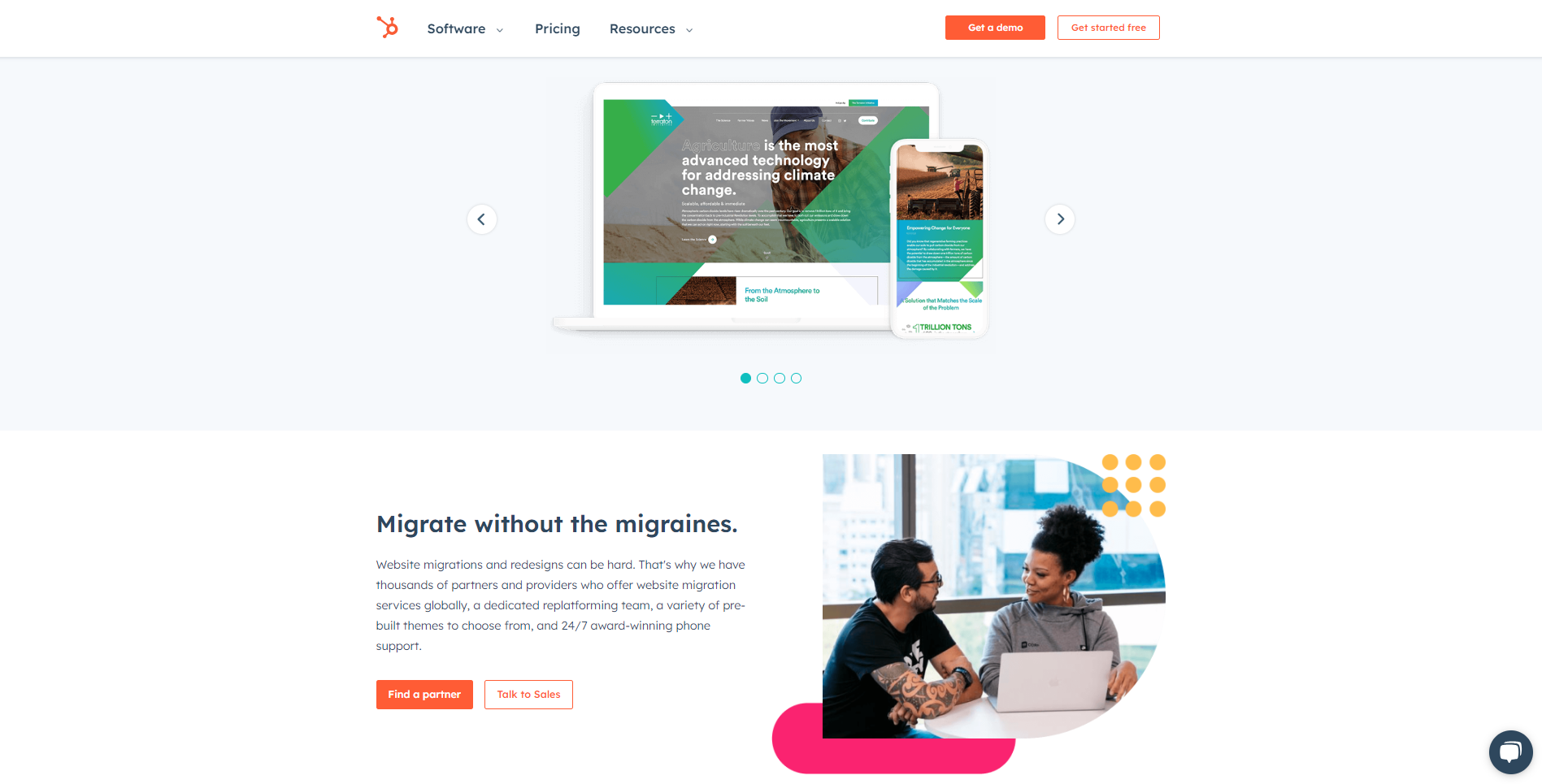
Market Positioning: Definition, Types, Benefits, How to’s, and Examples

Every company wants to be positively recognized by its logo, and for a good reason. Studies reveal that 81% of consumers require a sense of trust in a brand before they even consider making a purchase. To achieve such a level of audience engagement, it is necessary to work on market positioning, as it is a way for brands to be perceived as appealing by consumers.
In this article, we’ll answer all your questions regarding the topic, such as what market positioning is, what are its different types, why market positioning is important, and what its successful implementation looks like. So, let’s dive deep into the subject!
What is Positioning in Marketing?
Let’s start with the definition of positioning in marketing. Positioning in marketing strategy is the process of establishing a unique identity or image of your brand in the minds of your target customers. It involves differentiating your product or service by highlighting its distinct qualities and comparing it to competitors.
Market positioning is a vital component of any promotion strategy, as it helps businesses connect with customers on an emotional level, distinguish themselves from competitors, align with their target market, and build a strong brand identity. By effectively positioning their brand, companies can create meaningful connections, drive customer loyalty, and achieve long-term success.
Types of Positioning in Marketing
Understanding market positioning strategies is crucial for achieving a competitive edge in today’s dynamic marketplace. In this regard, we would like to highlight several prevalent types of market positioning tactics.
Price Positioning
The price positioning is defined by consumers’ perception of whether a product’s price is expensive, neutral, or cheap. This perception is closely tied to the perceived quality of the brand’s products and services. By implementing an appropriate pricing strategy, sellers can reshape their price positioning and thereby alter customers’ perceptions of the brand or a specific product.
Customer Service Positioning
Businesses operating in sectors notorious for lackluster support have an opportunity to stand out by just adding friendly and attentive customer support to their services. In contrast, certain companies may emphasize their sophisticated support systems, especially if they offer complex products that require additional assistance.
For example, Apple products are renowned for their premium pricing, but the company’s customer support team is well-regarded for being friendly, efficient, and responsive, offering customers a positive experience even long after the purchase.
Convenience Positioning
Market positioning in general refers to how a company positions its product or service to competitors in the market. One effective approach to the task is to highlight the superior convenience provided by a company’s offering compared to its peers. Such advantages may include favorable location, ease of use, wide accessibility, and support across multiple platforms.
For instance, customers are more likely to choose a product if they know the business has a user-friendly return policy, offers free shipping, or provides convenient local delivery options.
Differentiation Positioning
Differentiation positioning revolves around highlighting a product’s unique or innovative qualities in comparison to your competitors’ offers. By adopting a differentiation positioning strategy, your brand and product can attract consumers who want to stay in touch with tech trends. If your product is entirely new, it can be beneficial to provide transparent information about the research and testing that went into its creation.
A prime example of this strategy is Tesla. Before the introduction of Tesla vehicles, there were no high-profile, fully electric cars available in the market. Tesla has emerged as a leading tech company, spearheading advancements in self-driving cars and AI robotics.
User Group Positioning
User group positioning involves tailoring your marketing efforts to target a specific customer type. It requires a deep understanding of your target users and their needs. By analyzing their preferences, behaviors, and pain points, you can craft compelling messages that resonate with them and demonstrate how your product can address their specific issues.
Social Media Positioning
The selection of channels your brand utilizes communicates its qualities just as effectively as your content. Surprisingly, a company doesn’t have to maintain a presence on every platform. When employing this strategy, the key lies in identifying the channels most relevant for your target market. Several factors come into play when deciding on a social media platform for your brand strategy:
- The platforms where your target audience spends their leisure time.
- The platforms where your target audience makes purchases.
- The platforms where your target audience seeks information and advice.
Once you’ve narrowed down the appropriate channels for your brand’s visibility, you can tailor your messaging to engage customers where they are most active.
5 Benefits of Market Positioning
Now, we get to the most interesting part — the main advantages of market positioning to business owners:
Establishing a Strong Competitive Position
Positioning provides valuable insights into the client’s mindset and perception of your brand compared to competitors. By ensuring that customers view your products and services as trustworthy and reliable, you can gain a competitive edge in the market.
Enabling Targeted Market Segmentation
Positioning enables sellers and companies to emphasize specific features or benefits of a product, catering to a specific target market. This focused approach enhances the effectiveness of your sales and marketing efforts, resulting in increased visibility and impact.
Facilitating Effective Decision-Making
Having a well-defined positioning strategy enables you to make informed, data-driven decisions. Furthermore, a clear marketing position promotes efficient communication with customers, organically creating a stable client base.
Aligning with Consumer Needs
Marketing positioning enables a company to communicate the key benefits of its products or services, bridging the gap between the offer and the specific needs of the customers. This connection helps to engage and resonate with the target audience, fostering a strong bond between your brand and customers.
Boosting Revenue
For any business, striving to improve sales and revenue is paramount. By offering highly relevant products or services, you can attract more customers and, thereby, increase your sales.
6 Steps to Build A Marketing Positioning Strategy
The process of building a market positioning strategy can differ depending on your goals and market niche, yet there are several universal steps applicable in most cases:
Conduct Competitor Analysis
Conduct thorough research on your competitors to identify any significant distinctions between their products and yours. This analysis enables you to recognize your company’s strengths and the unique qualities of your product. You can also use SWOT analysis to compare your strengths and weaknesses in relation to your competitors and find a vector for creating positioning.
When researching your competitors, focus on the following elements:
- Growth rate.
- Market share.
- Cultural factors.
- Audience engagement.
- Previous marketing efforts and campaigns.
- Released marketing materials.
By analyzing these factors, you gain valuable insights that can inform your market positioning strategy and help your brand stand out.
Develop Unique Selling Proposition
Utilize the research you conducted to compare and contrast your business with others, enabling you to identify areas where you excel. Consider aligning your product positioning with the brand’s values or mission statement. This alignment creates a cohesive brand message, which is particularly beneficial if your company offers multiple products.
Craft a Positioning Statement
Develop a positioning statement that will shape how your audience perceives and understands your brand. It should define your brand’s essence and its objectives. Additionally, include details about your target audience and the specific issues they commonly encounter in their personal or professional lives. Highlight how your product or service can address such situations.
Develop a Catchy Tagline
Utilize your positioning statement as a foundation for creating a concise and impactful tagline. A tagline serves as a short memorable slogan that communicates your brand’s purpose and value to the audience. It can be incorporated into your email marketing and promotional materials to effectively engage customers. A tagline is a quick and engaging way your customers can recognize and comprehend your brand’s essence and value proposition.
Implement Your Positioning in Marketing Materials
Once you have developed your positioning statement and strategy, it’s time to incorporate them into your marketing materials. Ensure that your marketing collateral, such as value statements, design elements, and messaging, clearly communicates your market position and highlights the unique value your company or product offers. Focus on creating materials that directly benefit and resonate with your target audience.
For example, you may create informative infographics that explain key industry concepts, featuring your company’s logo prominently. If you make this content valuable enough to share, it will boost brand exposure and reinforce your position as an authority in the field.
Evaluate the Effectiveness of Your Marketing Positioning
Once you have devised concepts for your marketing materials, it is essential to test them. Carefully analyze and compare the outcomes of each marketing piece to identify those that yield the best results, such as generating high revenue numbers and achieving strong customer engagement rates.
Analyze the campaigns that prove successful and incorporate adjustments into ones that perform below average. It is important to consistently test your ideas to ensure that you continuously appeal to your target audience and adapt to their evolving preferences.
Common Mistakes You Should Consider While Developing a Market Positioning Strategy
Excessive indulgence in anything is detrimental, and the same applies to market positioning. When a brand makes an abundance of promises and asserts itself as the absolute best in the market, it can face unfavorable consequences. Therefore, let’s explore some common mistakes that marketers make when developing positioning strategies:
- Confused positioning. Making numerous claims and frequently altering product features can bewilder customers and create uncertainty regarding the brand’s image.
- Over-positioning. Going excessively specific in niche selection and targeting only a small group of customers can pose a challenge for a company. It is challenging to reach sales targets if the number of potential customers is insufficient.
- Under-positioning. Simply put, under-positioning occurs when a brand fails to establish a unique or differentiated image in the minds of potential customers. As a result, clients struggle to distinguish the brand from its competitors.
- Doubtful-positioning. Doubtful positioning can be described as a situation where something appears “too good to be true.” Customers become skeptical about the claims made by the brand when they seem suspicious or unrealistic. This often happens when a product’s price, physical features, and other aspects fail to align with the company’s assertions.
4 Examples of Market Positioning
Now, let’s check some bright market positioning examples from companies that got everything right!
Intellias
Intellias is a good example of the “user group positioning” we mentioned earlier. They work with the world’s leading brands and proudly showcase their partnerships on the home page of their website. This positioning strategy helps Intellias establish credibility and trust with potential clients, as customers recognize that reputable companies trust and rely on Intellias for their software development needs.
By featuring its collaborations with top brands, Intellias demonstrates its ability to deliver high-quality solutions and reinforces its position as a reliable and trusted technology partner. This approach also serves as social proof, assuring potential clients that Intellias has the expertise and capabilities to meet the demanding requirements of prominent organizations.

The Hemp Pantry
The Hemp Pantry’s vision embodies the company’s beautiful and lofty mission: to support and encourage sustainable, plant-based, nutritious food production and to demonstrate that food can be produced using a list of ingredients everyone can access, benefitting people and the environment.
The company’s positioning is based on an amazing combination of care for individual and universal needs. This mix definitely makes the company stand out on the market!

HubSpot
HubSpot exemplifies the epitome of “inbound marketing” by creating a vast, customer-centric platform that provides valuable content to its readers.
HubSpot is renowned for being:
- User-friendly.
- Focused on customer needs.
- Highly effective in its content delivery.
These qualities make it a natural choice for countless consumers worldwide. Furthermore, HubSpot has evolved into an “all-in-one shop” that offers a comprehensive range of services, including:
- CRM (Customer Relationship Management).
- Marketing automation.
- Sales and service solutions.

Etsy
Etsy is a global marketplace for unique and creative goods. Their positioning model is based on opposition to increasing automation, which has allowed them to create a space for makers and connoisseurs. They support their tagline — “Keep Commerce Human” — by providing:
- Handmade products.
- Vintage items.
- Unusual and unique items.
Etsy’s positioning and mission are so thoughtful and well-regarded by customers that Forbes published an article on the company’s culture.

Conclusion
We hope that by now we have drawn your attention to the benefits of positioning in marketing. Market positioning is a crucial aspect of promotion strategy that helps businesses differentiate themselves from competitors, connect with customers, and establish a strong brand identity. However, what sounds simple and obvious in theory can be pretty difficult to implement without hurting your business in the process. If you want to follow those successful examples of positioning in marketing we’ve mentioned before, you better rely on professional help. We at Livepage provide digital marketing services for eCommerce, know our onions and can help you avoid common mistakes to let your business achieve success in no time. For even more insides, contact the Livepage team, and we’ll bring your marketing campaigns to new heights!



















